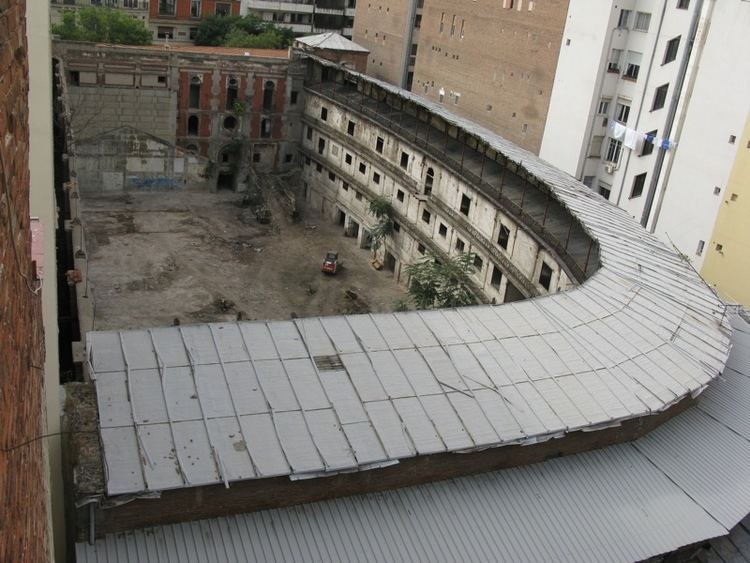Criteria Monument Phone +34 635 44 18 90 | Type Non-movable Designated 27 January 2011 | |
 | ||
Hours Open today · 8AM–12AMMonday8AM–12AMTuesday8AM–12AMWednesday8AM–12AMThursday8AM–12AMFriday8AM–12AMSaturday8AM–12AMSunday8AM–12AM Similar Tapassen, Café Belén, Lambuzo, Maria Bonita TacoBar | ||
The Beti Jai fronton is a sport venue located in Madrid, Spain, currently in ruins.
Contents
Located at 7 Marquis of Riscal St., the building (in Neo-Mudéjar style) dates from 1893 and it was opened in 1894. The last game was played in 1919. Currently in ruins, the venue is the last surviving 19th century Basque pelota fronton in Madrid. It was declared bien de interés cultural on 27 January 2011.
History
The fronton was begun to be built in 1893, with a budget of approximately 500 000 pesetas. It is due to a design by architect Joaquín Rucoba (1844-1919), author of the Plaza de toros de La Malagueta, the Mercado de Atarazanas and park in Málaga, and the City Hall of Bilbao, among other works. It was the fourth infrastructure of these open features in Madrid at the end of 19th century, in a time when the sport of Basque pelota reached a remarkable popularity in the Spanish capital. It was preceded, in this order, the frontons Jai Alai (1891), Fiesta Alegre and Euskal Jai.
It was opened on April 29 of 1894 (other sources indicate the May 29 of the same year) and it was in operation until the year 1919. With the Civil War during Siege of Madrid its facilities were converted into police station, and during the early years of the Francoist dictatorship, served as a test site for musical bands linked to the Spanish Falange. In the middle of 20th century, was sold the auto company Citroën, who used it as a repair shop.
In 1997 was bought for 2.3 million euros by the Basque company Jai Alai Fronton, initially intended its recovery for sport use. Subsequently, the property was taken over by the company Aguirene.
The January 27 of 2011 was declared Bien de Interés Cultural by the Community of Madrid.
In 2010 the City Council of Madrid began a process of expropriation, completed in the year 2015, and paying for it the amount of 7 million euros.
Description
The Beti Jai Fronton is located at number 7 of the Calle del Marqués de Riscal, very nearby of the Paseo de la Castellana, in the Madrilenian district of Chamberí. It occupies a plot of 3609 m² and the built area reaches 10 800m². It is made in different styles, including most notably the Eclectic of the main facade, the Neo-Mudéjar present in some parts of the interior and the Cast-iron architecture characteristic of the 19th century.
Its core it comprises an outdoors field, 67 m long, 20 m wide and 11 m high. Around the same it extend the stands, that around the track in its eastern and southern sides, drawing a plant semi-elliptical.
The grandstand has a capacity for 4000 people and is divided into four floors, closed at the inside by balconies with railings interconnected via stairs of wood. It is supported by a network of columns and beams of wrought iron, some of them curved to give inclination to the stands, and has wooden deck. On the roofs are preserved remains of frescoes.
On the western side rises a Neo-Mudéjar curved wall.
Homonyms frontones
There have been other frontones also called Beti Jai in Barcelona, San Sebastián and Logroño. the San Sebastianan was subsequently the Teatro Circo and disappeared with a fire occurred in 1913.
